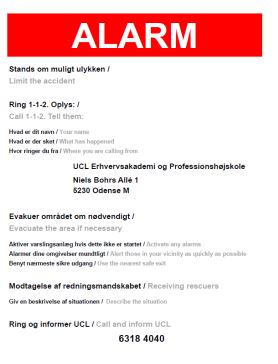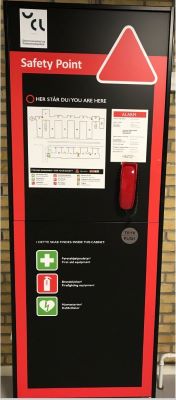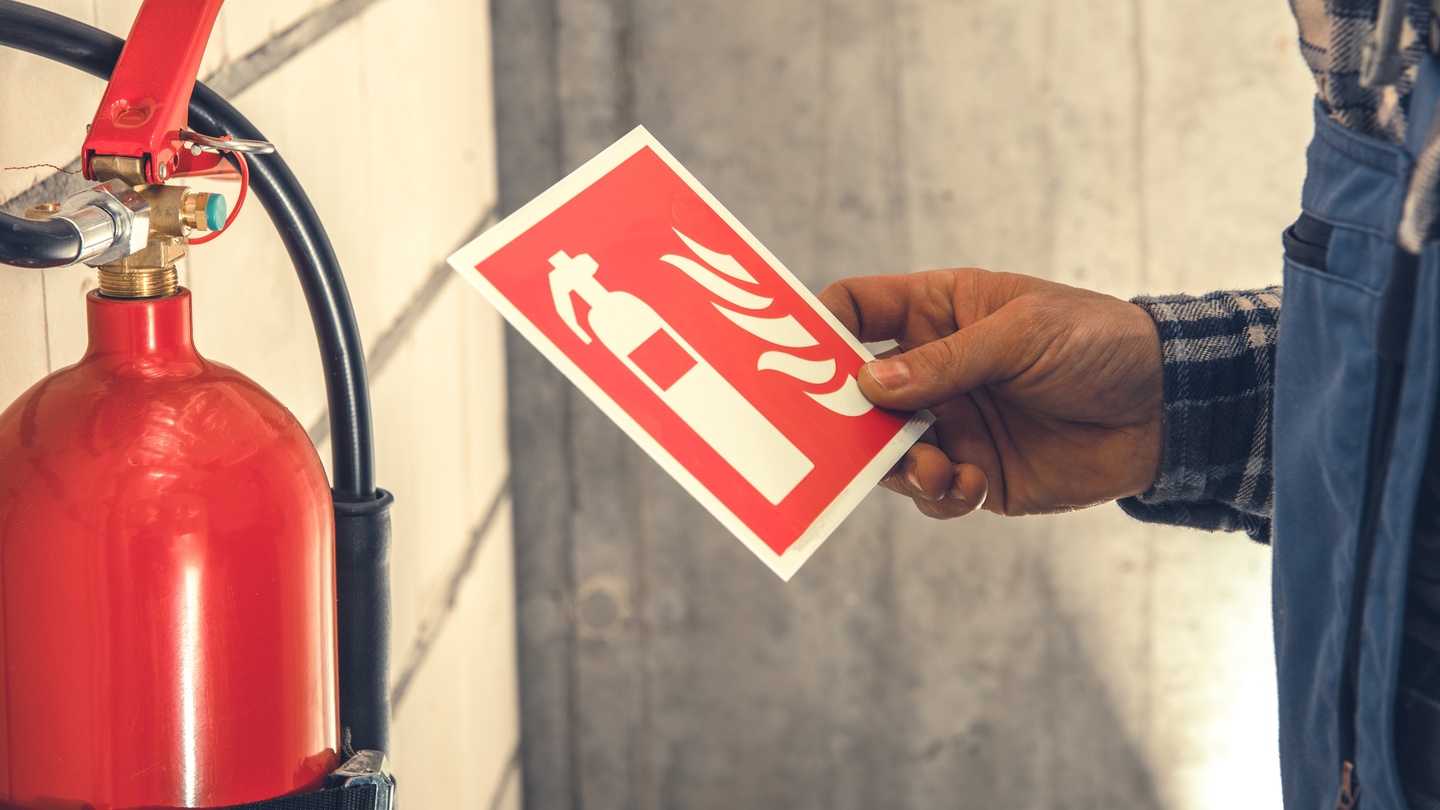Emergency alerts
Altering others
At UCL, we make it a priority to enable effective alerting of persons at risk in cases of emergency.
Therefore, alarm instructions include our complete address to help first responders reach those affected as quickly as possible. In addition, they direct that Facility Service personnel must be contacted at the 63 18 40 40 phone number (staffed around the clock) to facilitate timely assistance in limiting damage.
Instructions are posted here:
- Safety information is displayed in larger classrooms and auditoria. It provides an overview of "Safety Points", the maximum number of persons allowed, alarm instructions, and the closest escape route and meeting point.
- A "Safety Point" includes an emergency telephone number, a map showing its location, and equipment for use in extinguishing a fire, giving first aid, and treating cardiac arrest.
"Safety Points" are black cabinets placed in high-traffic areas in locations where they can easily be noticed. These locations are shown on the campus maps.


Fire
Three elements must be present for a fire to start and develop: Oxygen, a suitable temperature, and flammable material. Removal of one or more of these will cause the fire to die down. A fire takes seconds to spread upwards, minutes to spread sideways, and hours to spread downwards.
Therefore:
- Cut off oxygen (to a fire in a small room): Close doors and windows and ensure that no fresh air gets in (e.g. through an open window).
- Lower the temperature (in the case of fire in electrical installations or flammable liquids): Use a fire extinguisher to cool the fire to a temperature at which it dies out.
- Remove the flammable material (in the case of fire in a trash can or the like): If possible, pick up the item and throw it out a window.
- When alerting and evacuating is under way in the vicinity of the fire, begin alerting persons, staff, students, and visitors in areas above, in neighbouring areas, and in areas below.
Follow the alarm instructions and do not attempt to put out the fire unless you feel you are able to do so and know exactly what to do.
|
Evacuations
One important element in emergency response at UCL is making sure that all persons present, staff, students, and visitors, are able to evacuate from a building to a safe location in case of an incident.
Similarly, we prioritize awareness on the part of students and staff as to fire related conditions in the buildings, such as escape routes, alarm signals, evacuation sites, etc.
Evacuation procedures are described in the alarm notices posted in hallways and classrooms.
An evacuation may be instigated by staff, by first responders such as police officers or fire fighters, or by anyone who has identified a dangerous situation.
Unless other instructions are given, you must leave the area via the closest safe escape route and go to the closest safe meeting point. Escape routes and meeting points are shown on the notices in the hallways.
